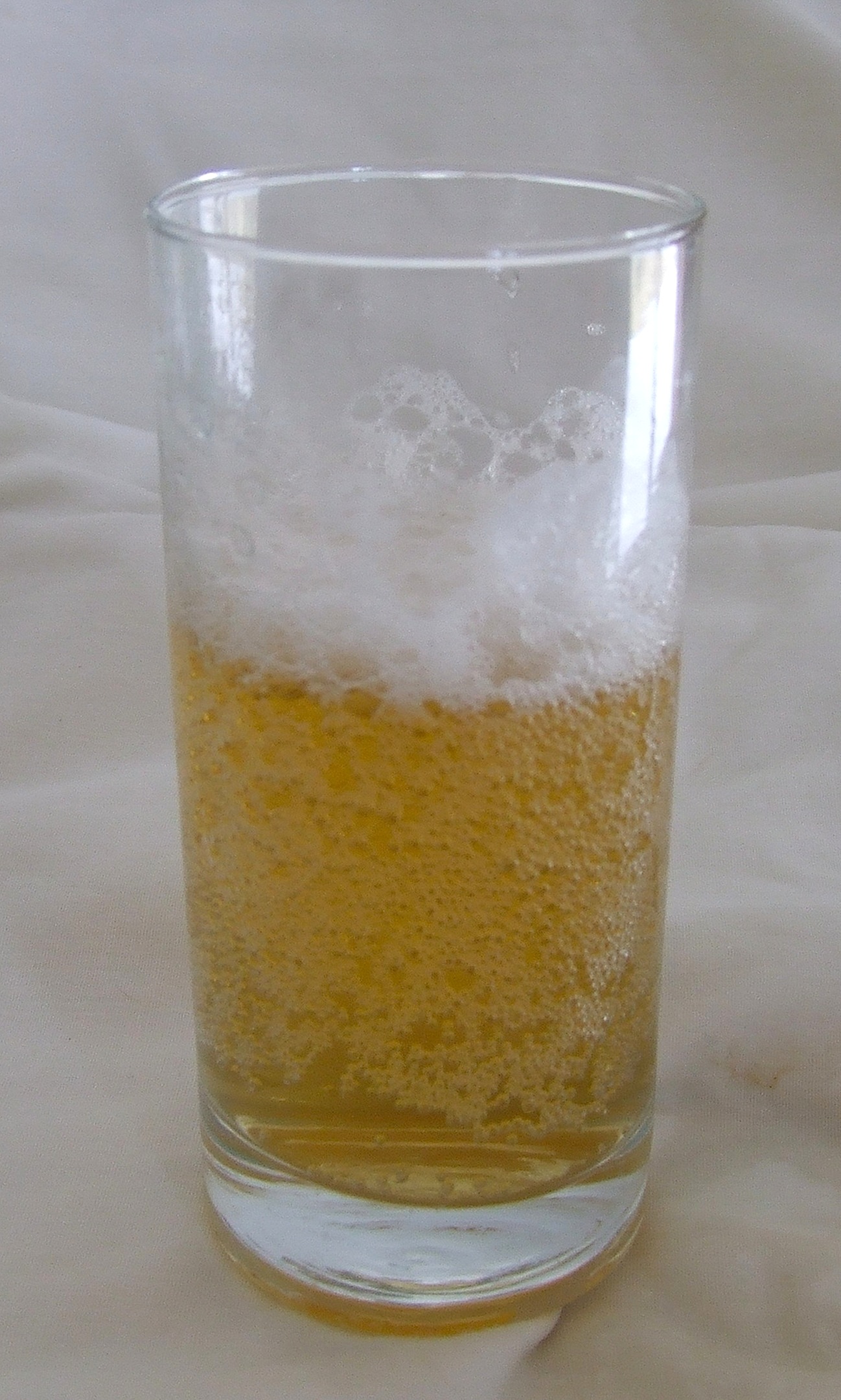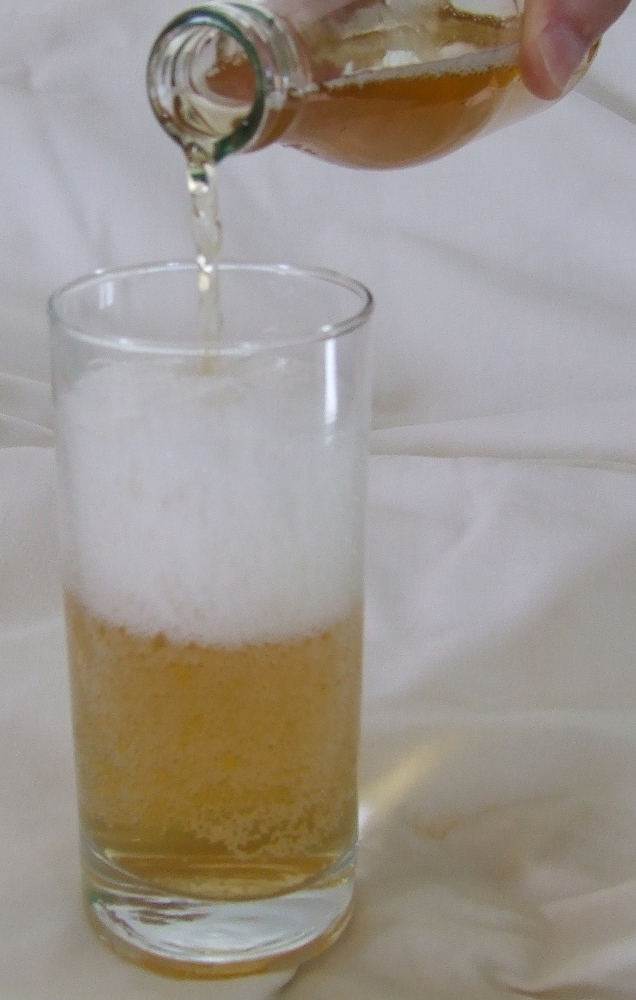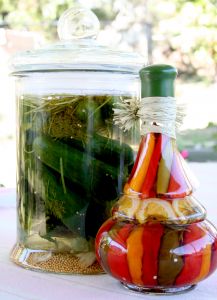


There are certain foods fermented by bacteria that are beneficial to the human body, called probiotic foods. The World Health Organization’s definition of probiotics is "live micro-organisms which, when administered in adequate amounts, confer a health benefit on the host". Healthy bacteria are organisms that are useful to digestion and inhibit the growth of intestinal pathogens, thus preventing disease (especially intestinal disease), boosting the immune system and helping to keep the balance of intestinal flora.
 Yoghurt
Yoghurt
Yoghurt is a dairy product fermented by beneficial bacteria like streptococcus thermophilus and lactobacillus bulgaricus, and sometimes lactobacillus acidophillus and bifidobacterium. It should contain about 100 to 1000 million living bacteria per ml of the product. These microorganisms help to break down carbohydrates, proteins and lipids. So, yoghurt consumption can improve bad breath, reduce abdominal distension and ease stomach pain.
Nowadays more people avoid dairy products and so, soy milk is an excellent alternative option, especially when it’s homemade, making it healthier and cheaper.
The best way to make your own yoghurt is to use the right yoghurt ferment (rich in lactobacillus) and an automatic yoghurt maker machine. The yoghurt maker machine will keep the temperature constant at 40 ºC, which allows good bacteria to grow easily without being destroyed, and helping to keep all the benefits from this probiotic food.
Kefir
Kefir is a fermented milk drink, made with a yeast and bacterial fermentation starter community, commonly called kefir “grains”, yoghurt plant”, “yoghurt mushroom” or “yoghurt flower”. You can use either vegetable or animal milk, or even water to produce kefir, at room temperature, between 10ºC and 250ºC.
Kefir has its origins in the Northern Caucasus mountains, and was introduced in Russia during the early 20th century, which followed on to the rest of the world. It has a uniform, thick and creamy consistency, and a slightly sour taste. It also has a natural carbonated effervescence and contains between 0.08 to 2% alcohol.
You can use kefir in a lot of different ways: as a plain milk drink, in smoothies or milkshakes, or as a yoghurt, adding it to muesli, for example. You can also mix it with aromatic herbs and if you strain some of its liquid you can use it as a spread.
kefir grains contain lactose-fermenting yeasts (Kluyveromyces marxianus) and non lactose-fermenting yeasts (Saccharomyces omnisporus, Saccharomyces cerevisae e Saccharomyces exiguus), Lactobacillus casei, Bifidobaterium sp e Streptococcus salivarius subsp thermophilus.
Kefir can be easily made at home. Just add your kefir grains, or kefir starter, to milk in a covered plastic or glass acid-proof container , leaving the lid slightly open to release the gas produced during fermentation. The container is not filled to capacity, allowing room for the liquid level to rise during this process. It is then left at room temperature for about 24 hours.
Kefir’s value comes from the quality and quantity of the amino acids it contains. It also contains beneficial bacteria for the intestinal tract and helps to boost the immune system.
 Kombucha
Kombucha
Kombucha is a drink that’s been prepared since ancient times, and probably has its origins more than 2000 years ago in China. It has been passed along as a sign of friendship.
It’s a drink that’s produced by a specific fungus, (also called tea mushroom ou tea kelp) which is added to black or green tea and sugar, and left to ferment for one or two weeks. Besides being refreshing, it is also an excellent probiotic drink.
You can grow kombucha yourself and prepare your own homemade drink, or you can buy bottled kombucha tea from natural health food stores or restaurants.
The final product has a low alcohol (0.5-1%) and a low sugar content. The longer the fermentation time, the lower the sugar and the higher the alcohol. The acetic acid that results from the fermentation, prevents the growth of unwanted contaminants, which explains why Kombucha lasts so long.
Kombucha is not recommended during pregnancy or when breastfeeding, due to the presence of heparin (a compound that slows the clotting of blood). If used during breastfeeding, it may act as a powerful laxative for the baby’s delicate digestive system. Haemophiliacs should also avoid this drink.
Miso
Miso is a fermented soy paste, produced from cooked soy beans and mixed with other cereals and salt. You can obtain different varieties of miso, depending on the cereals added to the soy beans. If it’s only made with soy, it’s called miso hatcho, or soy miso, which is thicker and has a stronger taste. Regarding nutritional values, it has the highest protein concentration (21%) and the lowest carbohydrates content (12%).
The most common variety is miso mugi, produced with soy and barley. It contains a small amount of carbohydrates and about 13% of proteins.
Miso genmai, made from soy and brown rice, is lighter and softer and has a sweeter taste.
Miso is originally from Japan but today it is widely used in macrobiotic and vegetarian cuisine all over the world. It is used in a variety of simple miso soup recipes, or to add flavour to stews, beans, soy or tofu.
Miso is a living food, therefore it is easily assimilated by the human body and helps to keep the intestinal microflora balanced.
As it contains many beneficial microorganisms, which can be killed if overcooked, it is reccomended that miso is cooked at low temperature or that it is added to the foods just before they are removed from the heat. Dissolve miso in hot water before adding.
 Pickles
Pickles
Pickles are foods preserved in vinegar or salt. The most commonly used foods for pickling are carrots, cauliflower, onions and cucumbers. This process produces the lactic fermentation of the foods. It is a natural fermentation, produced by bacteria of the species Leuconostoc and lactobacillus.
However, refrigeration brought us different eating habits and fermented foods started to be used only occasionally as condiments. Nevertheless, it is important to include them in daily eating habits, due to their health benefits.
Sauerkraut
Sauerkraut is made by pickling cabbage, usually in salt, and then left to ferment. White wine or rice vinegar can also be used. It is very common in German cuisine, although it probably has its origins in China, during the building of the Great Wall of China. The main microorganisms naturally present in the fermentation are Leuconostoc mesenteroides, Lactobacillus brevis and Lactobacillus plantarum.
Insert date: 2014-02-19 Last update: 2014-02-24
Comment
![]()
![]()
![]()
Essential nutrients
Authors > Translators > Sónia Cruz
Authors > Contributor writers > Cristina Rodrigues